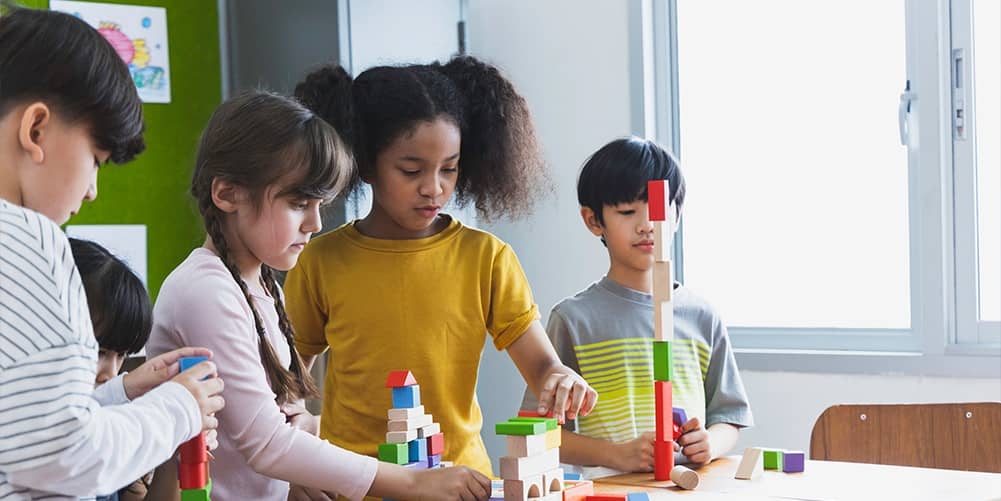The fresh scent of fall is in the air. Schools have opened their doors to welcome students back for the 2022-2023 school year. Now is a time of renewed hope and energy for a safe and productive school year. School safety is a top priority for everyone returning to in-person learning, from parents to teachers to staff.
Although they may start as strangers, teachers form special relationships with their students over the course of the year. They learn their students’ names, hobbies, and medical needs. They watch each of their students’ personalities emerge. One of the most rewarding aspects of teaching is the long-lasting impact teachers can have on their students’ lives. Teachers help to shape the future every day with their hard work and dedication to their students.
The beginning of the school year is also a time of uncertainty, for both teachers and students.
The first months of the school year are a crucial time for building a community that is optimal for learning. The cornerstone of an optimal learning environment is a school safety plan everyone can follow. Teachers may need guidance on how to handle threats to students’ safety or health. Students need to adjust from each of their individual home lives to the expectations of the classroom. Everyone needs to understand the school safety plan for how to respond to everyday incidents of bullying and behavior problems to the most extreme emergencies like natural disasters and intruders.
School culture and climate

School safety and school climate.
School culture and climate are both essential to positive learning outcomes for students, teacher job satisfaction and retention, and the overall “feel” of a school. But what is the difference between school culture and climate? School culture can be defined as the personality of the school while school climate is the school’s attitude. School culture is determined by the principles that shape the overall conduct of students and the beliefs of stakeholders. School climate is comprised of the perspectives of the students, teachers, and stakeholders.
Both school culture and climate impact student achievement and the learning environment. How does a school focus on improving both? What benefits do a positive school culture and climate have on students? How can a negative school culture or climate affect learning in a school?
Building a positive school culture
Positive school culture is essential to the happiness and well-being of students, teachers, and staff. How does one determine the state of their school culture? Observing whether students, teachers, and staff members seem to be enjoying interacting with each other is an indicator of the health of school culture.
Even if a school already has a positive school culture, there are things any school can do to maintain or improve it.
- Celebrate the successes of students and teachers
- Model the culture you want to see
- Prioritize traditions that are fun for students and staff
- Encourage teachers and students to be lifelong learners and innovators
- Keep a clean, fun, and modern physical environment
Intermittently taking time to analyze the school culture and ask for feedback from teachers, staff, parents, and students on what is working and what is not working will help guide you as you make adjustments throughout the year. This not only provides multiple perspectives on school culture, but it also shows everybody that their opinion is valued and their voices are heard.
Creating a positive climate with school safety
A positive school climate is linked to teacher retention, graduation rates, student development, academic achievement, student health, and more. Climate affects how every person on campus feels about the school.
Factors that affect school climate:
- interpersonal relationships between students and teachers
- connectedness felt by students toward the school
- school size and quality of the physical space
- respect for diversity
- support for academic and social-emotional learning
A negative school climate is detrimental to student learning and teacher job satisfaction. A school climate that is categorized as negative by staff members and teachers has been linked to everything from decreased graduation rates to increases in violence, bullying, and suicide.
School climate can be improved by:
- building strong relationships between students and staff
- maintaining high expectations for students and offering support
- regularly collecting feedback and making changes accordingly
Changing a school’s culture or climate is not an easy or quick task, but with its far reach for the success of both students and teachers, it’s worth the investment.
School Safety

School safety and school climate
School safety is the foundation of positive school culture and climate. Students simply cannot learn if they feel unsafe. Evaluating your school safety plan at the beginning of the year helps prevent issues, and also empowers students, teachers, and staff to act in the case of an emergency.
Teachers and staff deal with everyday disruptions such as fights and outbursts that can affect school climate and culture. These instances have become more frequent since the COVID-19 pandemic as students grieve the loss of loved ones, experience financial stress, and continuously adjust to changes in the way they are expected to learn.
Some ways to decrease everyday bullying and behavioral threats:
- high expectations for academic achievement and class conduct
- rewards for positive behavior
- clear rules and consequences for physical and verbal attacks
- consistent enforcement from teachers and staff
- support for teachers and staff in managing behavior crises
Teachers, staff, and the general public are also aware of threats that can come from outside the school. Although these are rare, it’s important to guard your school against them.
Prevention methods for outside threats include:
- every staff member and teacher wearing a photo ID and a mobile panic button
- visitor management and badging procedures
- modern safety solutions integrated into existing systems
There is no single person responsible for keeping a school safe. Every student, staff member, and teacher should have the knowledge and ability to respond to an emergency. CENTEGIX CrisisAlert badge can help.
Pros of a wearable badge:
- Accessible, convenient, and discreet
- Alert location accuracy
- Real-time incident alerts
- Easy to use when distressed
- Independent of wi-fi or cell service
The CENTEGIX CrisisAlert badge is designed to integrate with your existing school safety plan. It activates intercoms and visual signals like strobe lights that quickly and effectively notifies everyone on the campus and nearby of an emergency. With 100% adoption by the school staff and personnel, the CENTEGIX school safety solution improves school culture and climate by lending a greater sense of physical security to educators and students alike, allowing everyone to focus on what’s important—education.
